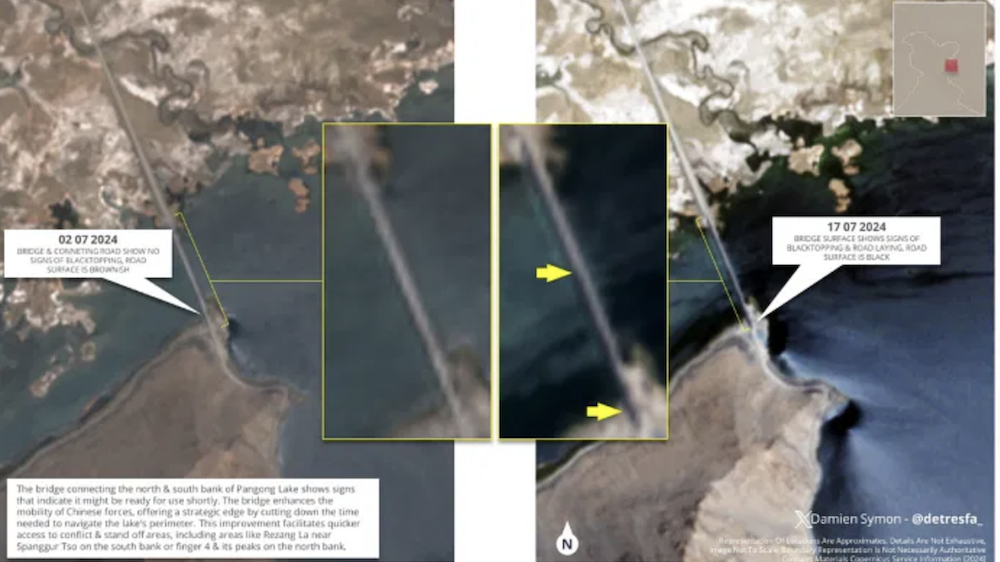 Arvind Iyer, a Mumbai-based independent filmmaker whose Tibetan Avideo album Paradise Lost was featured at Cannes at the Short Films corner recently, gets candid in an exclusive interview:
Arvind Iyer, a Mumbai-based independent filmmaker whose Tibetan Avideo album Paradise Lost was featured at Cannes at the Short Films corner recently, gets candid in an exclusive interview:
You were faring well as a website designer, so why the career shift?
I worked as a website designer in the late ’90s and I gave it up in 2002 as I had creatively burnt out. My clientele then had spanned the jet-set -painters, musicians and models from the world over. But I could not see myself creating art anymore and I was creatively dead. During this period (2000)it was my association with with Indian cinematographer Santosh Sivan that gave me the opportunity to understand his world through the eyes of film. His film The Terrorist is one of my all-time favourites. He even cast me in the film Asoka. I have fond memories of my first take with actor Shah Rukh Khan in the icy cold waters of the Narmada in Madhya Pradesh with Santosh Sivan’s gigantic camera staring at me in the face. I knew that this energy had to be an integral part of my future.
What was your source of inspiration for the video album Paradise Lost? How did the idea come about?
Paradise Lost is a musical track from Tibetan opera singer Namgyal Lhamo’s upcoming album that is due for release this year. I am also her business manager. Lhamo has performed with singers like Alanis Morrisette and Bjork at Freedom concerts in Amsterdam and New York. When I pitched the concept of the music video to our producer Achille Forler, CEO of Deep Emotions Publishing , we didn¹t have a clue as to what lay ahead. I just knew that that this was a pressure project as it featured Namgyal and British rockers The Wolfmen, and I was aware that Namgyal is the best Tibetan classical singer in the world and The Wolfmen are former members of the punk band Adam And The Ants, who even got a Grammy nomination in the ’80s.This had to be a concept that would cut through race, religion and language.
It was when the crew assembled in Bangkok last year that riots broke out in Lhasa and Tibet was exploding. The foreign press latched onto Namgyal and she was on the front page of a newspaper that read Free Tibet and the situation in Tibet was worsening.
How did you go about working on your video album?
We decided to travel up north in Thailand towards the Golden Triangle to the Lost Valley- A patch of no man’s land (which was once famous for its poppy fields) where the Tibetan Akha nomads lived on the edge of the Burmese border. It has a strong Yunnanese population. We met Hollywood tattoo artist Poh Khungsa and it was around then that I could sense that Namgyal was thinking on a different plain. The concept of the video just happened. It just fell from the skies. This would not have been possible without the vision of Achille Forler. He is a maverick in the music production business and a true representative of artists’ rights. Namgyal is signed to his record label.
China is averse to those who raise concern over Tibet, so how did you manage to air the video album during the Beijing Olympics?
I am a simple person and I do not understand politics and I never will. The reactions were pleasantly surprising. The Tibetans loved it and many Chinese people in the West did too. I only attempted to try and speak from the depths of the artist’s mind and believe that I have done so sensitively and responsibly. There was some hate mail though, but nothing serious. I believe that Paradise Lost is a very dignified statement and only echoes what many Tibetans across the world feel.
Your film will be showcased at the Short Films corner at Cannes from May 13. How are you feeling about it?
It feels good mainly because it is the only Tibetan language presence at the short film corner. It screens there till May 23. It is not in competition and screens independently. However, the screening of the video in as an official selection in competition alongside Chinese, Japanese and Korean films at the Asian Hotshots Berlin film festival in January was more overwhelming.
How can art or music contribute towards the cause of free Tibet?
Any art is a medium of expression and must be used aesthetically and responsibly. Saving Tibetan culture is very important. It is vast, rich and very ancient and the world order must do whatever is in its capacity to conserve its culture and address issues that directly concern the aspiration of the Tibetan people. Tibetan people have a strong cultural identity, it is a root that no amount of development can tweak. Tibetans can never become Chinese.









